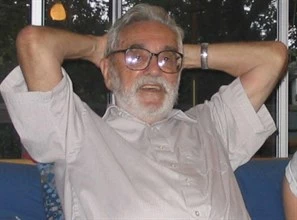
Salvador Minuchin didn’t just theorize about families—he observed them in action. His work reshaped how clinicians understand family systems, giving us a practical, structured lens to view family conflict, roles, and communication. The result was Structural Family Therapy (SFT), a model still widely used today—and a sometime topic on the ASWB licensing exam.
This post breaks down the core concepts of Minuchin’s model and shows how it may appear on the test.
What Is Structural Family Therapy?
Structural Family Therapy focuses on the invisible rules and roles that govern family functioning. Minuchin believed that problems within a family arise not from individual pathology, but from the structure of the family system itself.
Social workers using SFT aim to map, assess, and shift that structure—intervening directly in family interactions to create healthier dynamics.
Key Concepts of Minuchin’s Model
-
Family Structure: The organized pattern in which a family operates—who’s in charge, how decisions are made, how members relate.
-
Subsystems: Smaller groupings within the family such as the parental subsystem, sibling subsystem, and spousal subsystem.
-
Boundaries:
-
Clear: Healthy, flexible, and functional
-
Rigid: Overly strict or distant
-
Diffuse: Blurred roles, lack of autonomy (often leads to enmeshment)
-
Enmeshment: Members are overly involved in each other’s lives; common in families with diffuse boundaries.
-
Disengagement: Emotional distance or lack of involvement; linked to rigid boundaries.
-
Hierarchy: The power structure in the family—usually, parents should lead. Problems arise when children take on adult roles (parentification) or parents are sidelined.
Real-World Application for Social Workers
You might see these patterns in:
-
A child acting out at school while caught in a coalition between parent and grandparent
-
A teenager treated like a peer instead of being given age-appropriate limits
-
A family where no one talks about conflict, and members operate in isolation
In SFT, the social worker might use joining, boundary setting, or enactments (encouraging families to demonstrate their interactions in session) to shift dynamics.
How This Could Appear on the ASWB Exam
Expect questions that describe family conflict, blurred roles, or power struggles, then ask you to:
-
Identify the concept (e.g., enmeshment)
-
Choose the intervention (e.g., strengthen parental subsystem)
-
Recognize appropriate boundaries or hierarchy issues
Practice Question
A social worker observes that a mother regularly confides in her teenage daughter about marital problems, while excluding the spouse. The daughter has begun missing school and showing signs of anxiety. Based on Minuchin’s Structural Family Therapy model, what should the social worker address FIRST?
A. Disengagement between the daughter and her peer group
B. The mother's violation of confidentiality
C. Diffuse boundaries between the mother and daughter
D. Poor communication in the spousal subsystem
This pattern reflects enmeshment and boundary confusion, key concerns in SFT. Correct answer: C. Diffuse boundaries between the mother and daughter
For More on Family Therapy Models
Want to see how Structural Family Therapy compares to Bowen, Narrative, or Strategic approaches? Read our overview: Family Therapy Models, Interventions, and Approaches
Try a test now
Want more realistic ASWB exam practice? Get started with SWTP's full length practice tests now.

